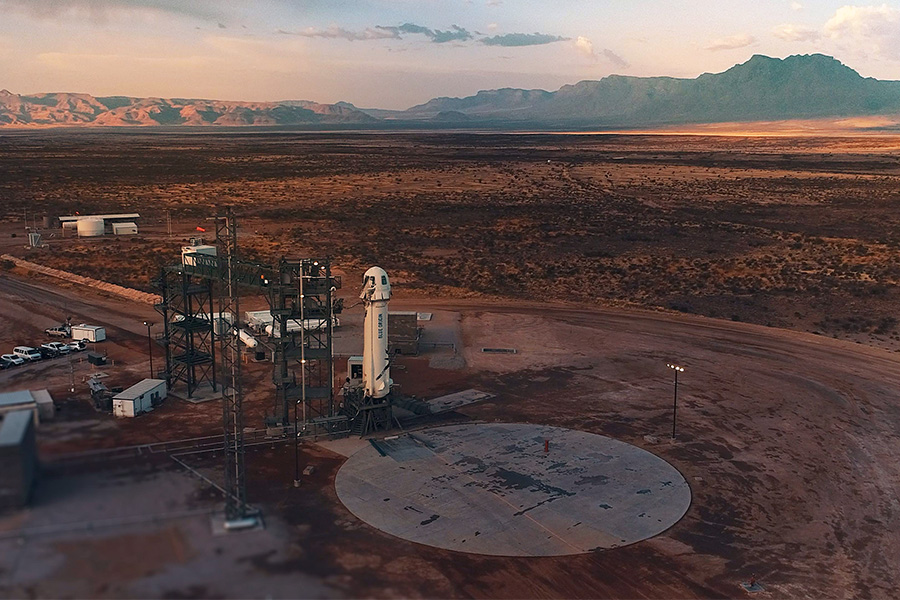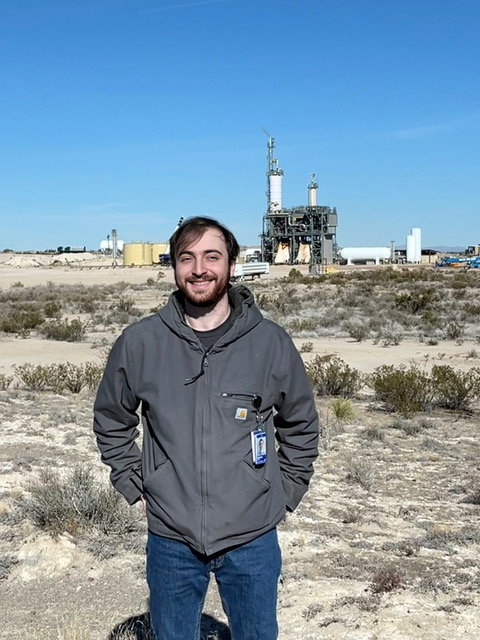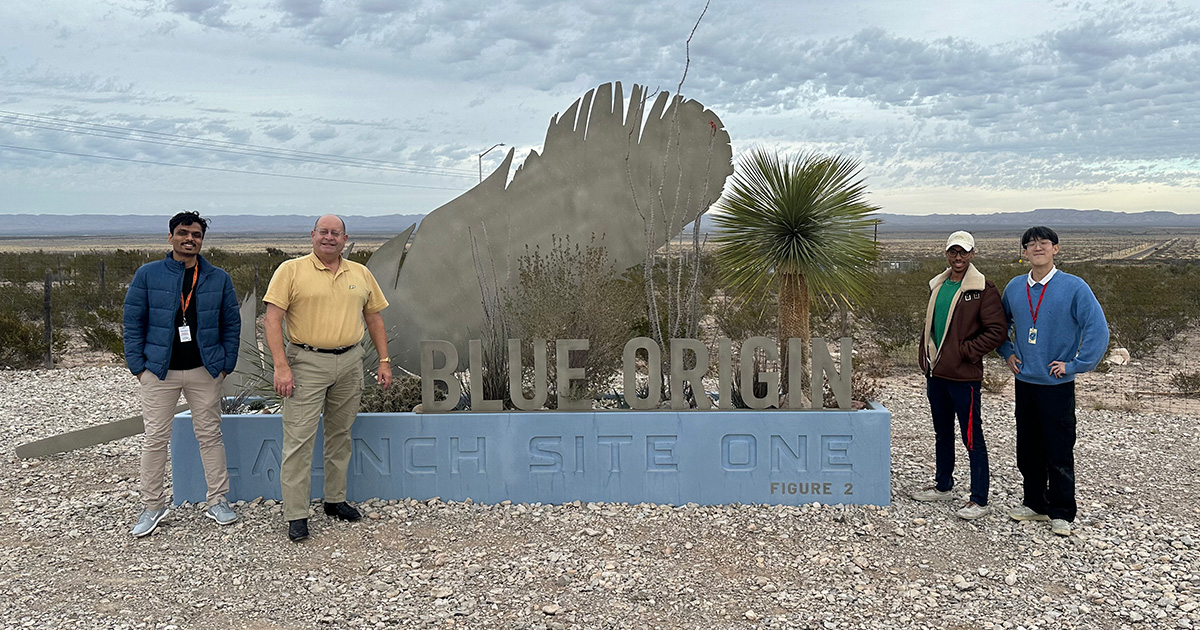Student-built experiment launched on Blue Origin New Shepard payload flight
| Author: | Alan Cesar |
|---|

Professor Steven Collicott’s long-running AAE418 Zero-Gravity Flight Experiment course has launched an experiment aboard a Blue Origin rocket. The “2D-Slosh” experiment ran for several years in AAE418, Collicott says. Dozens of students, many of whom are now alumni, have worked on it.

One of those students, Matthew Bransky (BSAAE '22), was involved in the experiment during the 2020-2021 school year, and supported this launch as a Blue Origin employee. "I work on the BE3-PM engine, specifically the engine that was used for flight," Bransky says.
Collicott traveled to the launchpad with AAE PhD student Monish Lokhande and AAE undergrads Don-Terry Veal and Sean Jung to watch the launch. “They did a great job helping me get the experiment prepared for loading on a very tight schedule last Tuesday and Wednesday while studying for exams. One of them even took a STAT 511 exam at the launch site to coordinate with the on-campus exam time,” Collicott says.
This experiment is one of 33 payloads aboard. Blue Origin has flown more than 150 payload missions to space, 13 with the New Shepard ship. The company says more than half of the payloads on this flight are developed and flown with support from NASA, including Collicott’s — he purchased the space on this launch with funding from a NASA grant. “I thank many of you, faculty and staff, for help along the way with this payload,” he wrote in an email to the department.

The launch was broadcast live on blueorigin.com and across social media. New Shepard lifted off at 11:43 a.m. ET on Tuesday, Dec. 19, 2023, from Blue Origin’s facilities in West Texas and safely landed back on Earth about 10 minutes later. The experiments experienced a few minutes of microgravity during the trip.
